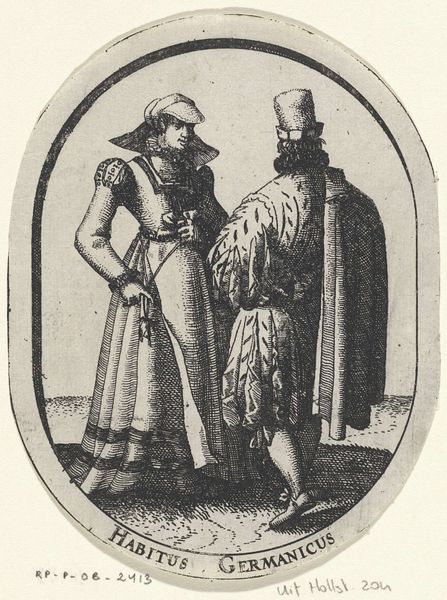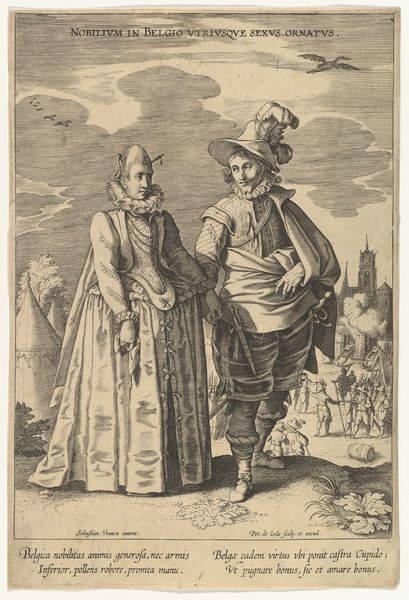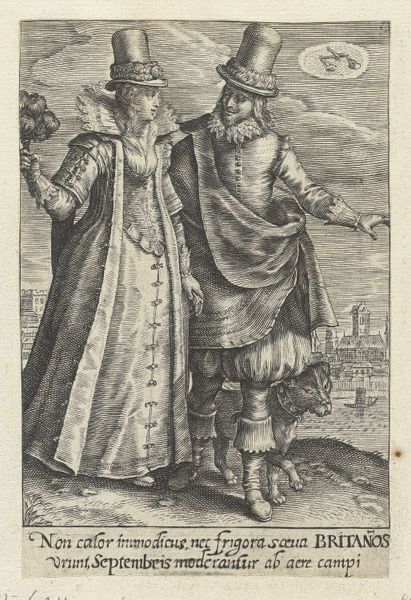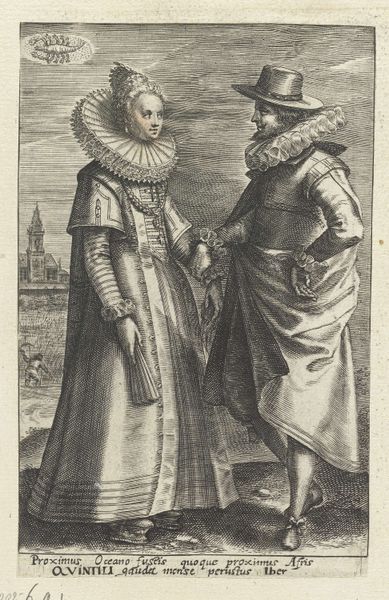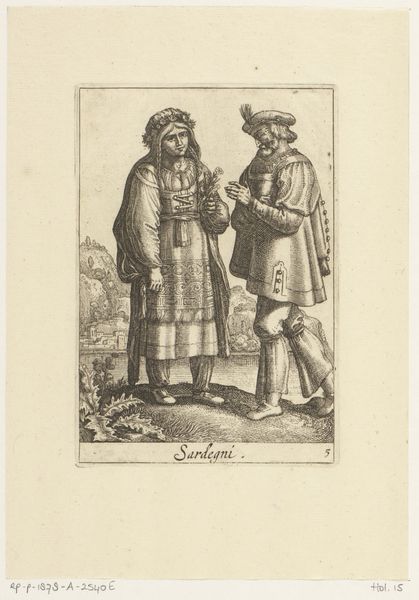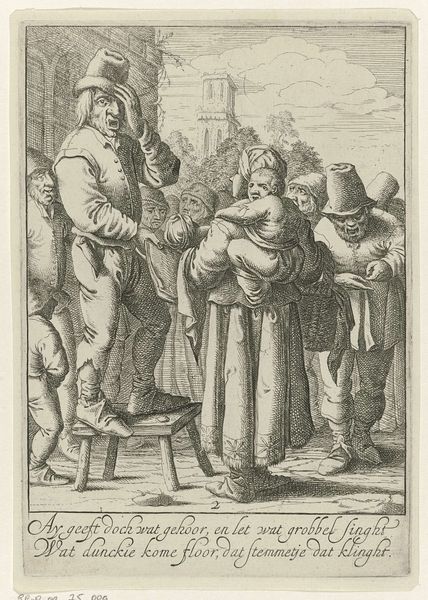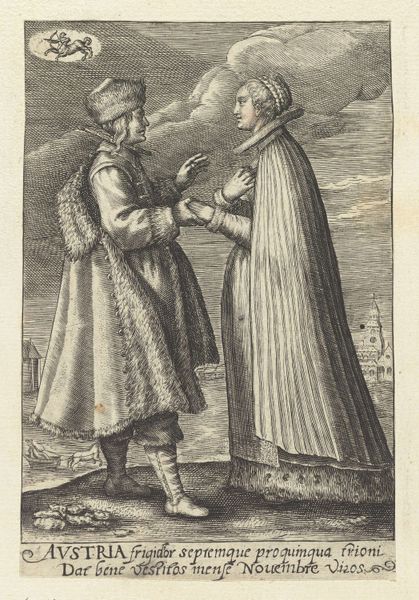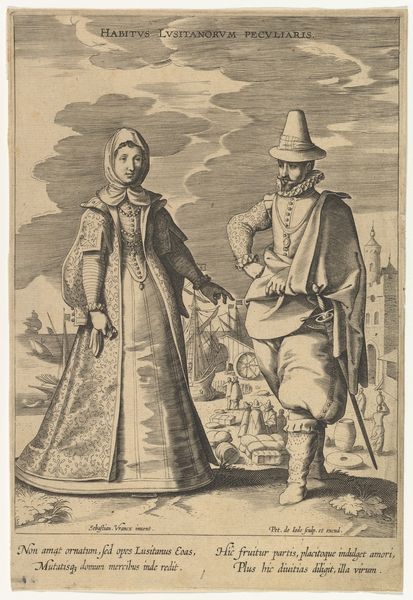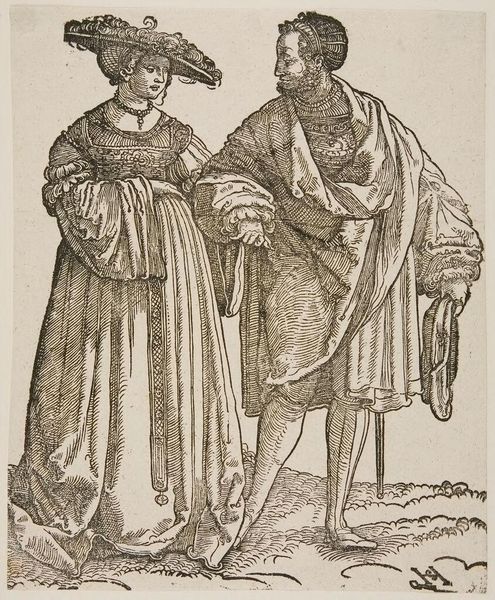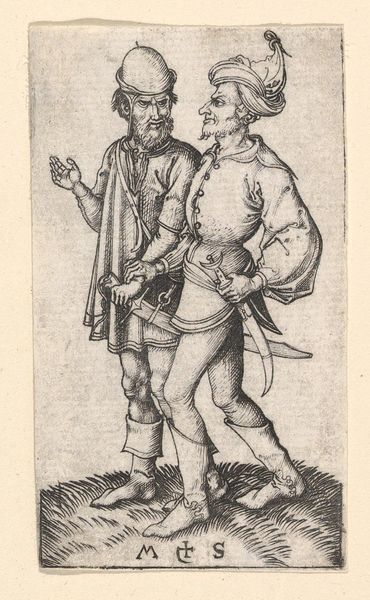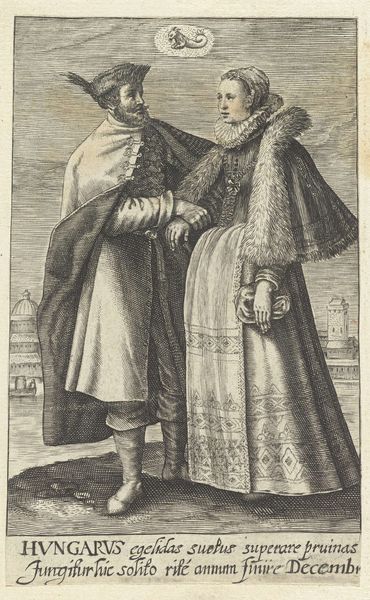
print, engraving
#
portrait
#
baroque
# print
#
portrait drawing
#
genre-painting
#
history-painting
#
engraving
Dimensions: height 131 mm, width 83 mm, height 424 mm, width 271 mm
Copyright: Rijks Museum: Open Domain
Curator: What strikes me immediately about this print, titled "Januari: een paar uit Moskou" by Crispijn van de Passe the Younger, is the sheer weight of fabric. Look at the textures created in the engraving – the deep furs, the patterned brocade of the woman’s robe, the detail. Editor: The layers are clearly signifiers of power, both literally keeping them warm and visually demonstrating their wealth, a way of navigating rigid social constructs. I wonder what stories those clothes could tell about social identity. It seems to date from 1604 to 1670. Curator: The labor involved in producing garments of this opulence—consider the weaving, the dyeing, the tailoring! It makes you think about trade routes and craft specialization in the period. Editor: Indeed. And what about the representation of gender here? The man has a swagger, a dark fur-lined cloak; her posture is almost apologetic, yet her patterned cloak shows status. It hints at the complexities of relationships within this particular society. Also, consider this work within the context of cultural exchange—what did this imagery communicate about Russian society to a Dutch audience? Curator: That’s insightful. I’m thinking of the materials, the copper plate from which the engraving was made, how it allows for multiplication and dissemination of images… bringing visibility, creating stereotypes, generating revenues. Editor: Exactly. And the context is crucial—who commissioned this print? For what purpose? This work provides valuable insights into the representation of "otherness," and its effect on those who are subjugated by said narratives of otherness and status. Curator: There's also the simple pleasure in looking at the execution. De Passe’s command of line and tone… to render the differences between fur and skin is remarkable. It gives an image of materiality to that of power. Editor: Well said. Thinking about art, power and representation offers such rich insights here. Curator: Agreed, a fascinating snapshot into 17th century perceptions and artistry.
Comments
No comments
Be the first to comment and join the conversation on the ultimate creative platform.

